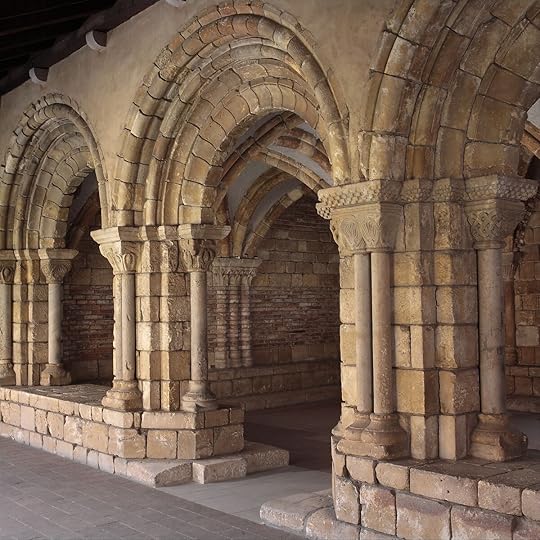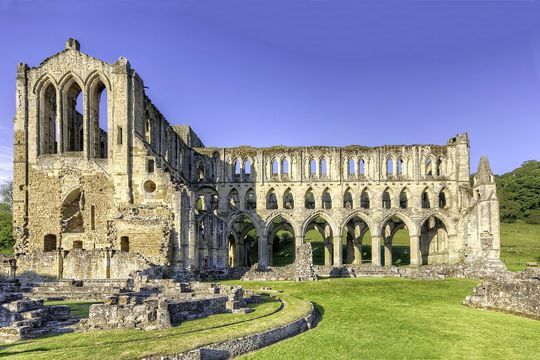
Introduction: Welcome to the Artful Mind Blog’s Inaugural Post
Throughout the Middle Ages, monastic orders played a pivotal role in shaping the spiritual and cultural landscape of Western Europe. As centers of prayer, learning, and community, these religious institutions were not only the custodians of Christian faith but also the patrons and innovators of artistic and architectural traditions that continue to inspire to this day. In this inaugural episode of Artful Mind, we explore how the Benedictines, Cistercians, Franciscans, and Dominicans—each with their distinct spiritual philosophies—left an indelible mark on the arts, transforming the very fabric of medieval society. Future posts will talk about how each of these movements impacted architecture, painting, and sculpture as well as look outside of Europe to see how monastic orders in non-Christian religions impacted art in Asia.
Benedictines: The Architects of Order and DevotionThe Benedictine Order, founded by St. Benedict of Nursia (480-547) in the 6th century near Rome, is often considered the cornerstone of Western monasticism. Guided by the Rule of St. Benedict, which emphasized stability, manual labor, and prayer, Benedictine monasteries became self-sufficient communities dedicated to spiritual and intellectual pursuits. This focus on community and worship found expression in their architectural designs, which prioritized functionality, harmony, and a sense of divine order.

Benedictine monasteries, such as the famed Abbey of Monte Cassino (destroyed by Allied bombing in WWII but rebuilt ater the war), became models of Romanesque architecture. Characterized by solid, heavy forms, thick walls, and rounded arches, Romanesque architecture reflected the Benedictines’ values of permanence and resilience. These structures were designed not only to withstand the ravages of time but also to symbolize the eternal nature of divine truth. The simplicity and grandeur of these buildings created a sacred space that facilitated the monks’ daily rhythm of work and prayer, embodying their commitment to a life of contemplation and service. This was the dominant architectural style for churches and cathedrals built in Europe between the 6th and 13th centuries. Some famous examples of Romanesque architecture include the Pisa Cathedral (Italy), the Basilica of Saint-Sernin (Toulouse, France), and the Basilica of Cluny (France).
Cistercians: Embracing Austerity and Architectural InnovationIn the 11th century, the Cistercian Order emerged as a reform movement within Benedictine monasticism, advocating for a return to the original simplicity and austerity of monastic life. Founded by St. Robert of Molesme (1028-1111) and popularized by St. Bernard of Clairvaux (1090-1153), the Cistercians originated in eastern France and sought to eliminate the excesses that had crept into monastic life, including the lavish decorations and ornate designs of some Benedictine churches. Curiously enough, St Bernard also co-founded the Knights Templar.

The Cistercian approach to architecture was revolutionary in its simplicity. Their churches, such as the Abbey of Fontenay (near Montbard in Burgundy, France), eschewed the elaborate ornamentation of the Romanesque style in favor of unadorned, clean lines and an emphasis on light. The use of pointed arches and ribbed vaults in Cistercian buildings would later influence the development of the Gothic style, which combined structural innovation with an ethereal quality that sought to draw the eye—and the spirit—upward, towards the heavens. The Cistercians’ commitment to functional beauty not only reflected their spiritual ideals but also laid the groundwork for the architectural marvels of the Gothic era.
Franciscans and Dominicans: The Art of Preaching Through Image and WordWhile the Benedictines and Cistercians focused on the monastic life, the Franciscans and Dominicans took their faith to the streets, founding mendicant orders that emphasized preaching, teaching, and living among the people. Established in the early 13th century by St. Francis of Assisi and St. Dominic, respectively, these orders brought a new dynamism to the Church’s mission, one that was deeply engaged with the urban centers of medieval Europe.

The Franciscans, inspired by the love of St. Francis of Assisi (1181-1226) for nature and simplicity, often commissioned art that reflected their values of humility, compassion, and the beauty of creation. This is evident in the frescoes of Giotto in the Basilica of St. Francis in Assisi (near Perugia in central Italy), where the life of St. Francis is depicted with a revolutionary use of naturalism and emotional depth. These works broke away from the more rigid, hierarchical styles of earlier medieval art, making religious themes more accessible and emotionally resonant for the faithful.

The Dominicans, on the other hand, were instrumental in the development of the Gothic style, particularly in their adoption of the large, open spaces of Gothic churches that were ideal for preaching to large congregations. Saint Dominic (1170-1221) came from north central Spain, but founded his order in 1215 in Toulouse, France. Their commitment to education and the dissemination of theological knowledge also led to the production of richly illustrated manuscripts and theological treatises that blended artistry with intellectual rigor. They often ressemble fortresses which is logical in that the Jesuits “soldiers of Christ” issued primarily from the Dominican order.
Legacy and Influence: A Living TraditionThe influence of these monastic orders on art and architecture extends far beyond the Middle Ages. Their commitment to integrating faith and beauty continues to inspire modern artists and architects who seek to create spaces that uplift the human spirit. From the minimalist aesthetics of modern church designs that echo Cistercian simplicity to contemporary artworks that draw on Franciscan themes of nature and compassion, the legacy of these early monastic orders remains vibrant and relevant.
As we journey through the Artful Mind series, we’ll continue to uncover how these foundational elements of faith have shaped the artistic and architectural traditions of the West, revealing the deep and enduring connection between spirituality and creativity. Whether in the soaring arches of a Gothic cathedral or the quiet beauty of a monastic cloister, the echoes of these monastic orders can still be felt, reminding us of the profound impact that faith can have on the world of art.
 newest »
newest »
 newest »
newest »
 What a brilliant and concise summary, Michael. I will be following your series very closely. Thank you for all of the time and research that you have put into a subject that so profoundly influences our Western identity.
What a brilliant and concise summary, Michael. I will be following your series very closely. Thank you for all of the time and research that you have put into a subject that so profoundly influences our Western identity.








